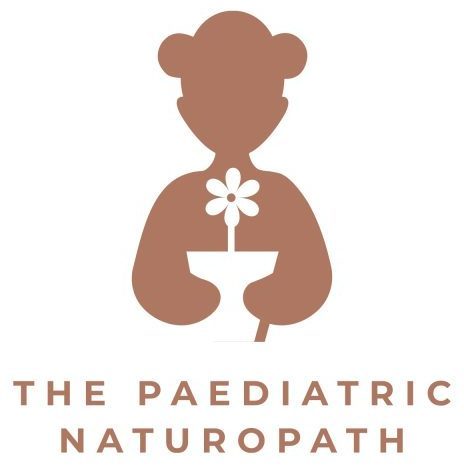Before you read this article, there is something to consider:
* 9% of children diagnosed with autism at age 2 will lose their diagnosis by age 4
(https://www.ncbi.nlm.nih.gov/pmc/articles/PMC4860351/)
There are lots of interventions to improve symptoms of autism and help children to flourish, however, the diet should be the first. It is possible to improve your child’s functioning through diet, and it is well worth giving it a shot!
Autism doesn’t just have one cause, it has multiple root causes, therefore there isn’t necessarily only one dietary approach which can work. Your child could have gut issues, detox pathway problems or mitochondrial dysfunction.
This isn’t about trying to change your child; it’s about stopping the pain, the digestive issues, stopping the seizures and healing your child’s body in a respectful way and increasing their life expectancy. Things won’t get better without doing something about it, but they can get worse.
The following are the dietary approaches I choose from when working with a child with autism.
- Gluten free, casein free, soy free (GFCFSF)
- Specific carbohydrate diet (SCD) / Gut and Psychology Syndrome (GAPS) diet
- Low oxalate diet
- Anti-candida diet
- Food sensitivity / elimination diet
- Paleo diet
- Low FODMAP diet
- Feingold / failsafe
- Low Oxalate diet
Now I’ll explain a little about how each one works, its positives and its negatives.
Gluten free casein free and soy free
This is useful because it removes substances that can cause digestive, neurological and systemic issues in some people. By removing these from the diet the gut can heal, nutrients can be absorbed and you can get some quick improvements.
This is my entry point for children with autism, it’s a great place to start. It is a reasonably straightforward diet to start with.
The reason why some people don’t get any results with it is because it can lead people down a road of eating highly processed gluten free diets. Highly processed gluten free foods can be higher in sugar and additives than products containing gluten. This is because the manufacturers are trying to replace the functionality of gluten in the recipe. That’s why it’s critical to work with a specialist nutritionist, rather than going alone on this diet. This must be approached from a perspective of whole foods, not processed foods.
SCD / GAPS diet
These diets remove disaccharides and polysaccharides. People who don’t have enough of certain enzymes in their body will react with constipation, diarrhoea, inflammation and bloating when they eat disaccharides and polysaccharides. Disaccharides are sugars such as sucrose (table sugar) and lactose (milk sugar). Polysaccharides are found in starches, like grains or potato. By temporarily removing them, the gut can heal and the bacteria in the gut are able to rebalance. This diet is useful for autism, and lots of severe gut issues. SCD is a bit easier to do, but it doesn’t include as many gut healing foods as GAPS does, which is why I prefer to use GAPS. There are numerous ways that GAPS or SCD can be done poorly, which is why I highly recommend you work with someone with specialist training in this area. For instance, some people do GAPS too low in carbohydrate. This can cause issues, particularly for people with thyroid or mitochondrial issues. Some people react strongly to some of the healing foods such as fermented foods, and never manage to progress and reap the benefits.
Paleo
Paleo is one of my favourite eating styles. It is very focussed on whole foods and it removes grains, dairy and soy. It is an approach which you can stick to long term, if it suits you. A common misinterpretation of the Paleo diet is that it is meat heavy. This isn’t actually true. The basis of all Paleo meals should be vegetables, with a bit of meat, rather than a slab of steak with a side of veggies.
Ketogenic diet
The ketogenic diet is quite trendy at the moment, particularly for weight loss. It is actually a therapeutic diet which has been used for a hundred years for epilepsy. It fell out of favour when anti-epileptic drugs were developed, and is only now recommended for people when epilepsy doesn’t respond to drugs. But shouldn’t dietary intervention come first, then drugs? It is a low carb, high fat diet which forces the body to use ketones for energy, not glucose. It is restrictive, but it works. It protects the brain and reduces oxidative stress, which is why it is helpful for autism. Again, you can do keto in a really unhealthy way. Think of a keto meal as a massive bowl of leafy greens, with olive oil and some meat. Not a slab of cheese.
Low FODMAP
A low FODMAP diet can be used if a child has really bad gut symptoms and we want to get immediate relief of the pain. It removes the foods that feed bacteria, so it reduces gas and bloating. However I see over and over people who have been told to do a low FODMAP diet years ago and are still on it. This is a disaster for gut health. The foods that feed bacteria feed the good bacteria and the bad bacteria. By permanently removing them you can starve the good guys, and gut health will go downhill over time. Never do a low FODMAP diet without supervision, and never stay on it long term (more than 6 weeks).
Anti-yeast diet
This removes sugar, which feeds candida and restores the body’s good gut bacteria. You can look for clues that your child has candida issues . This diet can get complicated with restrictions and food combining, so I use it in a simplified way for clients, and focus on reducing sugar.
Feingold / Failsafe diets
These remove food chemicals (naturally occurring and additives) called phenols from the diet. Lots of children with autism have issues with their biochemical pathways so they can’t detoxify these substances normally. Removing the phenols can give instant results, however it is a really restrictive, plain diet to stick with, and there is no end game. I frequently see people who have been on this diet for years, and still can’t tolerate any thing. I then guide them off the diet and on to something like GAPS which helps improve the range of foods they are able to eat. I have tried most diets myself, so I am familiar with their unique challenges, and this one is the hardest in my opinion.
Low oxalate diet
This isn’t one that you commonly hear about. I think about a low oxalate diet in people who have pain all over their body, and oddly enough have cloudy urine. I also think about it when someone proudly tells me how many green leafy veggies they or their kids eat. Lots of green leafy veggies are high in oxalates. A low oxalate diet can be a really unhealthy diet as it removes nutritious foods, so the emphasis always needs to be on temporary removal of oxalates while you heal the gut, then reintroduce them.
The take home message:
As you can see there is no one size fits all. A personalised diet needs to be chosen based on all the symptoms someone has.
Supplements are great, but they come after diet. You can’t out-supplement a bad diet, or even just the wrong diet.
And it is really important to remember that healing diets are therapeutic. They aren’t intended to be used forever. Get proper guidance from me on which diet is best for you by making an appointment here.




